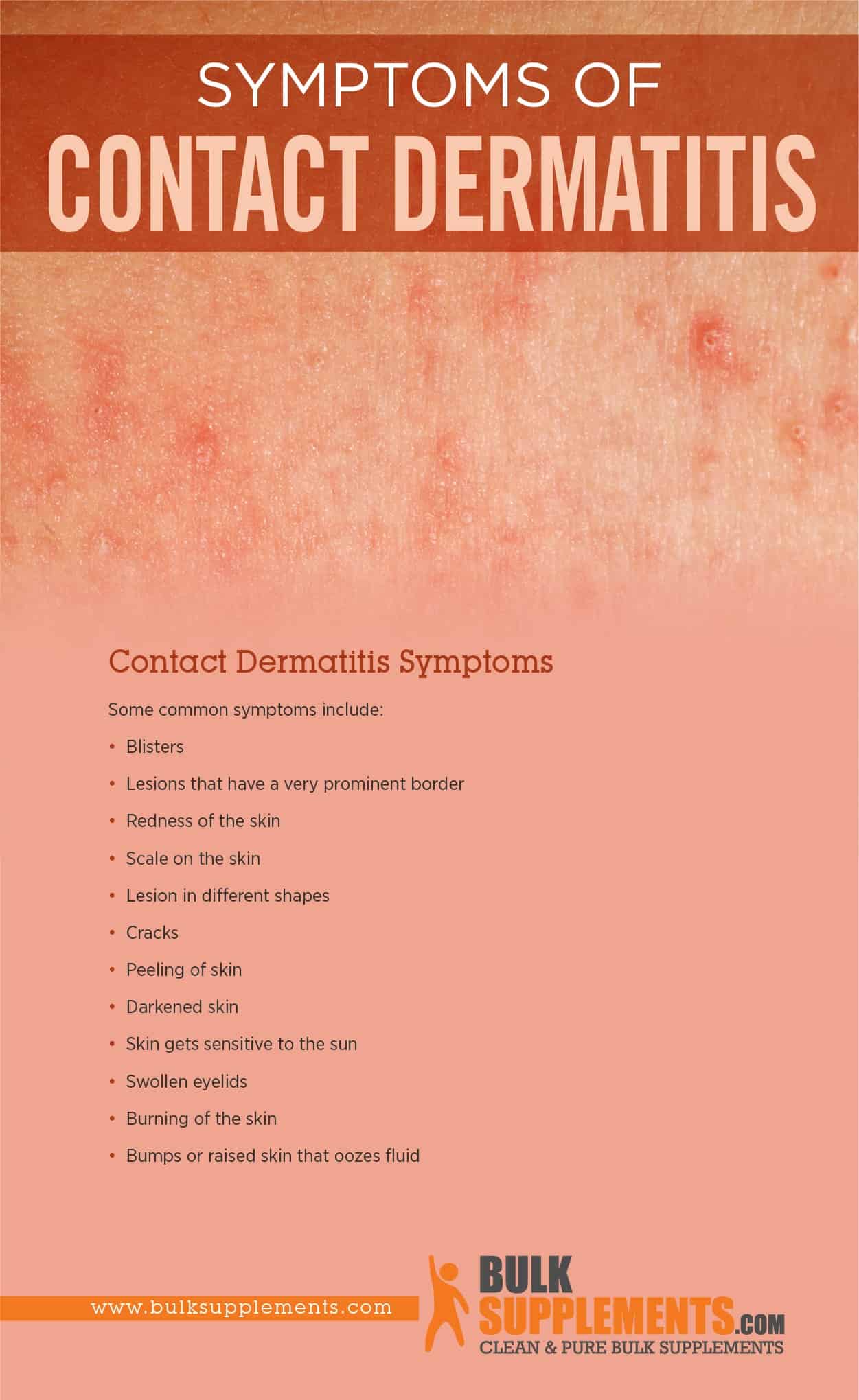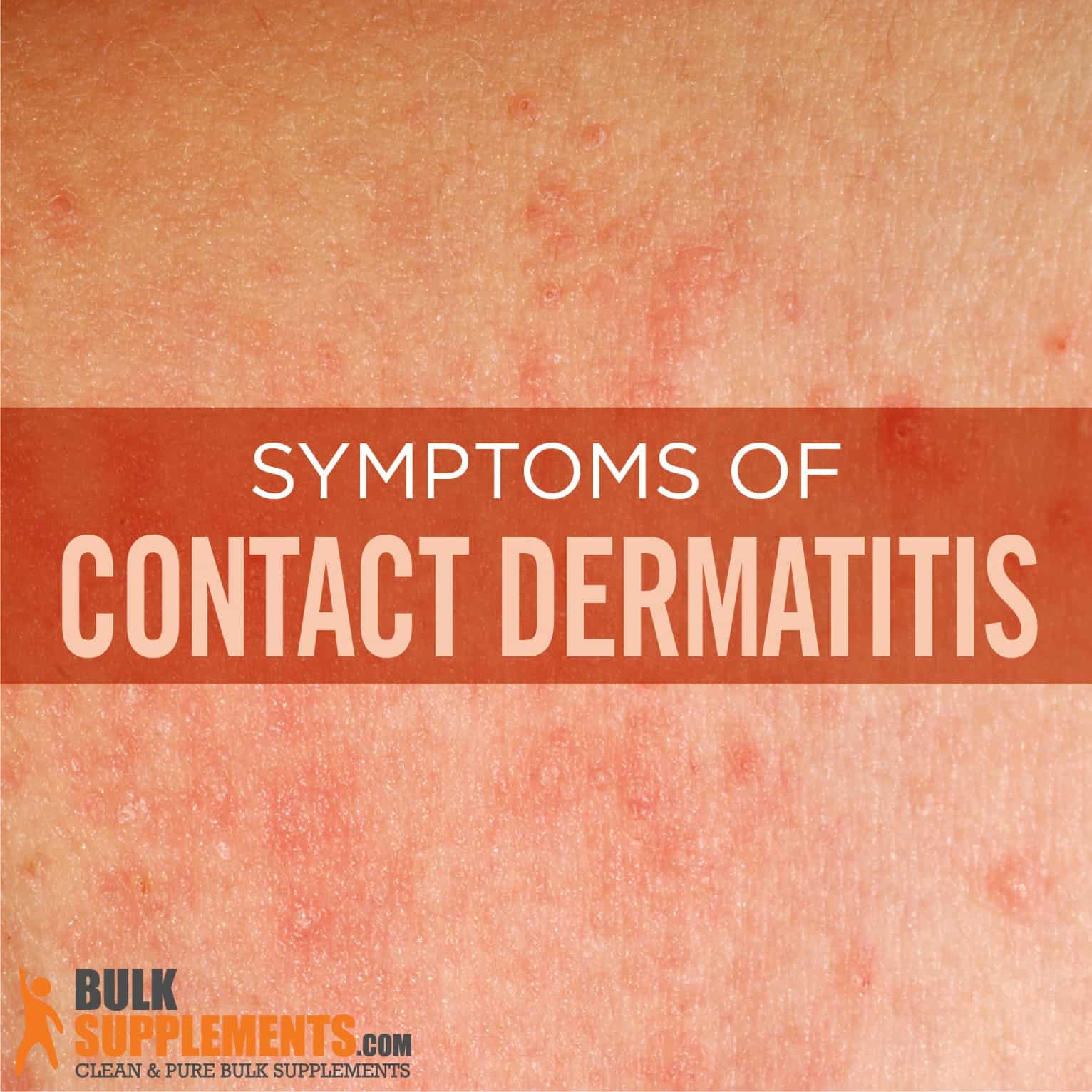What is Contact Dermatitis?
Contact dermatitis is a skin condition that develops after your skin has an interaction with an irritant, or if your skin is sensitive to an environmental element. It can cause a blistery and itchy rash — known as inflammation. It is a prevalent condition, and almost all people develop contact dermatitis at least once in their lifetime. In standard cases, it goes away on its own with no medical treatment. Although these flare ups are not contagious, the rash is quite painful and uncomfortable. However, if it persists for more than a few weeks, you may need the medical attention of a dermatologist. (x)
Ninety-five percent of skin diseases result from contact dermatitis. You might fall into the category of a high-risk person developing this disease if you are a nurse, you work in a beauty salon dealing with hair and skin products, landscaper, bartender, and if you work in a laboratory or industrial plants. Any job where you have “wet work” involves wet hands or hand washing accounts for over 25% of all work-related cases. (x)
There are two types of contact dermatitis. The first is dermatitis caused by an irritant that can cause rapid inflammation of the skin. The second is dermatitis caused by an allergen where the skin may take a few days to respond. However, the signs and symptoms of both types of dermatitis are similar. (x)
Contact Dermatitis Symptoms
Some common symptoms include: (x)
- Blisters
- Lesions that have a very prominent border
- Redness of the skin
- Scale on the skin
- Lesion in different shapes
- Cracks
- Peeling of skin
- Darkened skin
- Skin gets sensitive to the sun
- Swollen eyelids
- Burning of the skin
- Bumps or raised skin that oozes fluid
Contact Dermatitis Causes
Exposure of the skin to any substance that irritates the skin or causes an allergic reaction triggers contact dermatitis. This external substance could be any of the thousands of allergens and skin irritants. (x)
Irritant Contact Dermatitis
Contact dermatitis caused by an irritant is the most common type. It occurs when the outer layer of the skin gets damaged. The reaction of the skin with the irritant depends on the individual. You may develop signs after being exposed to the irritant for a few times, and even mild irritants can cause this reaction. (x)
Some common irritants that can cause a reaction are:
- Detergents
- Bleach
- Rubbing alcohol
- Shampoos
- Perfumes
- Fertilizers
- Pesticides
- Solvents
Allergen Contact Dermatitis
This type occurs when your skin is sensitive to an allergen, and the exposure to it causes the onset of dermatitis in the exposed area. Eating foods or substances your body is allergic to, like medicine, flavorings, dental procedures and so forth, can trigger a reaction. Once your body gets sensitive to an allergen, then even a tiny amount of it can easily cause the skin to react. (x)
Common types of allergens are:
- Medications like oral anti-allergic pills and antibiotics
- Nickel used commonly in buckles and jewelry (x)
- Formaldehyde added in clothing, disinfectants and preservatives
- Hygiene products like body washes, cosmetics, deodorants, hair color and nail polish
- Mango and poison ivy both contain an allergic substance called urushiol (x)
- Airborne substances like sawdust, pollen and spray insecticides
- Rubber and latex (x)
You Have a Rash, When to Consult a Doctor?
In most cases, the symptoms go away on their own. Still, it is best to see a doctor if the rash gets very painful, severe and spreads rapidly, or if the rash doesn’t get better within a month. Also, see your doctor if the inflammation affects sensitive areas like the genitals and face or if it gets unbearably painful, affecting your routine and sleep.
Common Risk Factors of Contact Dermatitis
- Frequent washing of hands
- Increased exposure to water
- Dry climate
- Wearing diapers
- Exposure to chemicals, acids and alkalis
Working as a nurse, cosmetologist, mechanic, chef, metal worker, musician or hairdresser (x)

Treatment of Contact Dermatitis
First, doctors will typically make a proper diagnosis, which includes studying the patient’s medical history, along with doing a physical examination of the patient. They perform patch tests and allergy tests to find the cause of the allergy. Then, the doctor will prescribe the proper medication.
The standard and conventional ways to treat contact dermatitis are taking antihistamines for allergens, taking oral steroids for more severe cases, taking antibiotics to treat painful blisters and lesions and applying hydrocortisone creams to reduce redness and itchiness. (x)
Of course, natural home remedies can tone down contact dermatitis symptoms and help ease the burning, itching, and discomfort. Here are some natural and simple home remedies to help treat contact dermatitis:
- Cut Down Exposure to Food Allergens
If the diagnosis confirms that you are allergic to a specific food item, avoid it. It means avoiding it altogether — do not consume it, handle it, or prepare it for others. Some common food allergens include soy, dairy products, wheat, gluten, seafood, tomatoes, corn, eggs, citrus fruits, mangoes and peanuts.
- Avoid Exposure to Known Chemical Irritants
If you develop sensitivity to any specific hair product, cosmetics, latex, rubber, metal, household cleaner or shampoo, then avoid all contact with any of them. It is to keep you from an attack of contact dermatitis and allow the body to heal naturally. The symptoms and rashes can then tone down.
- Moisturize the Rash
Soothing the rash to reduce the symptoms and the pain is essential. To do this, you can use moisturizing creams, especially those made from shea butter, coconut oil, lavender oil and tea tree oil. These are very beneficial for fighting skin-related issues and are commonly used to treat acne as well. Coconut oil is famous for having good antifungal and antibacterial properties.
Apply a pleasant and mild — preferably homemade — cream twice a day on the rash to keep it moisturized and hydrated. Keeping the affected area soft and soothed will help promote its healing to a great extent. Keep applying creams daily until the lesions heal properly.
A study comparing coconut oil and olive oil in treating Atopic dermatitis causes dry skin and colonizes Staphylococcus aureus. They chose these two oils because both treat skin infections and are moisturizers. It appears coconut oil did comparatively better in the overall study. (x)
- Avoid Scratching the Rash
Always keep your nails trimmed and avoid scratching the rash at all costs. It is because scratching can worsen the inflammation and infect it. Of course, easier said than done.
- Apple Cider Vinegar
The benefits of apple cider vinegar are countless. Research has shown that it has excellent soothing properties that can help fight bacteria and reduce inflammation. Apply a cream with apple cider vinegar, especially on the affected area, to help prevent it from getting attacked by bacteria and fungus.
The Dermatologist magazine reported instructing patients with hand dermatitis to soak their hands three to four times a week for 15 minutes in diluted apple cider vinegar. Then apply an emollient afterward. (x)
- Protect Your Hands
Wash your hands frequently to keep them clean. But always dry them afterward. Use gloves to keep them protected. Plastic gloves may be an excellent investment. It is essential not to infect your hands with the germs or fluid coming out of the rash.
Supplements for Contact Dermatitis
- Omega-3 Fatty Acids
Increase your intake of omega-3 fatty acids by consuming more salmon, mackerel, cod liver oil, chia seeds, walnuts and flax seeds. Omega-3 fatty acids are highly beneficial for skin health, maintaining blood sugar levels, improving the functioning of the immune system, heart health, and enhancing the mood and overall well-being. (x)
- Vitamin C
Vitamin C is beneficial for skin health. Because of its antihistamine properties, it helps reduce the symptoms of contact dermatitis. Some common foods that help provide vitamin C are strawberries, oranges, black currants, bell peppers, broccoli and pineapples. But if you are allergic to citrus, then you can take supplements. (x)
- Hyaluronic Acid Powder
Hyaluronic Acid (Sodium Hyaluronate) possesses antioxidant properties. Applied topically, it could help reduce wrinkles, sagginess, discoloration and dryness, and help improve the overall appearance of skin. It is often present in many beauty products because of its anti-aging and hydrating properties. Consult your doctor about how you prefer to make the topical cream. (x)
- L-Histidine HCL Powder
L-Histidine HCL is an amino acid that is a safe, non-steroidal way of managing atypical dermatitis and other similar skin conditions. Consult your doctor if you want to use this supplement.
- Collagen
Collagen helps promote healthy skin and possibly manage symptoms of contact dermatitis. The recommended dosage depends on which collagen supplement you want to use. Talk to your doctor to help you choose which one to take and how much.
Where to Buy Supplements for Contact Dermatitis?
You can purchase these powders and supplements for contact dermatitis at BulkSupplements.com. The company is an industry-leading manufacturer and distributor of pure dietary supplements.
BulkSupplements.com is not just a consumer brand. It also supplies pure ingredients to other food and supplement brands to make their products. All products at BulkSupplements.com are manufactured and tested according to current and proper manufacturing practices.
Are you interested in trying any of these powders or supplements mentioned in this article as a possible solution to contact dermatitis? Contact BulkSupplements.com to place an order today.
The Bottom Line
Contact dermatitis is a skin disease that nearly a million people in the U.S. experience annually. It is a non-contagious skin condition that goes away on its own but can turn out to be quite painful and severe if not treated properly.
Various cosmetics, beauty products, and chemicals present in household cleaners you become exposed to could cause a skin health concern. Various environmental factors and chemical compounds present in creams, antibiotics and pollen present in the environment may also cause the condition.
Working conditions and certain professions like nurses, bartenders and hairstylists are prone to contact dermatitis more than other occupations. It’s the “wet hands” situation that makes them susceptible to skin rash.
Home remedies can treat the disease and reduce the symptoms to prevent it from getting worse. Talk with your physician about taking supplements, applying powders, coconut oil or apple cider vinegar soaks to relieve the discomfort and inflammation.
Antihistamines, antibiotics and steroids are the standard treatments for contact dermatitis. However, the treatment mainly depends on the diagnosis and finding out the cause of dermatitis.
To avoid getting this condition, avoid various allergens like dairy, gluten and multiple cosmetics that can contain allergic components if you feel you have adverse reactions to any of these. You can also get tested and find out if you have allergies.
These statements have not been evaluated by the Food and Drug Administration. These products are not intended to diagnose, treat, cure or prevent any disease.


